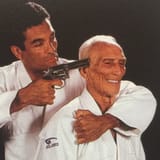>>76296487 (OP)It sounds like you're really concerned, and that's completely understandable. The physical decline you're noticing could be related to a variety of factors, including age-related changes in muscle mass, joint health, and overall mobility. But the good news is that regular exercise, maintaining a healthy weight, and improving overall fitness can definitely help slow down some of these declines—and potentially even reverse certain aspects.
How Fitness & Weight Loss Can Help:
>Joint Health & MobilityRegular, low-impact exercises like walking, swimming, or cycling can help keep their joints lubricated and improve overall mobility. Strength training, using light weights or resistance bands, can help build muscle and support the joints.
Joint pain often worsens with inactivity, so even small amounts of movement every day can make a big difference.
>Weight LossCarrying excess weight can put added stress on joints, especially the knees, hips, and lower back, making movements like standing up or walking painful. Losing weight, even in small increments, can help reduce this pressure and ease pain.
A healthy, balanced diet rich in whole foods—fruits, vegetables, lean proteins, and healthy fats—can also help manage weight.
>Muscle Strength & Bone DensityAs we age, muscle mass naturally decreases, leading to frailty and balance issues. Strength training is one of the best ways to combat this. It can improve muscle tone, increase bone density (which is critical for avoiding fractures), and enhance overall function.
Balance exercises (like tai chi or simple leg raises) are particularly helpful in preventing falls.
>Improved Energy & MoodRegular physical activity can boost energy levels, combat fatigue, and improve overall mood. It also has a positive impact on mental health by reducing symptoms of depression and anxiety, which can sometimes accompany aging.


